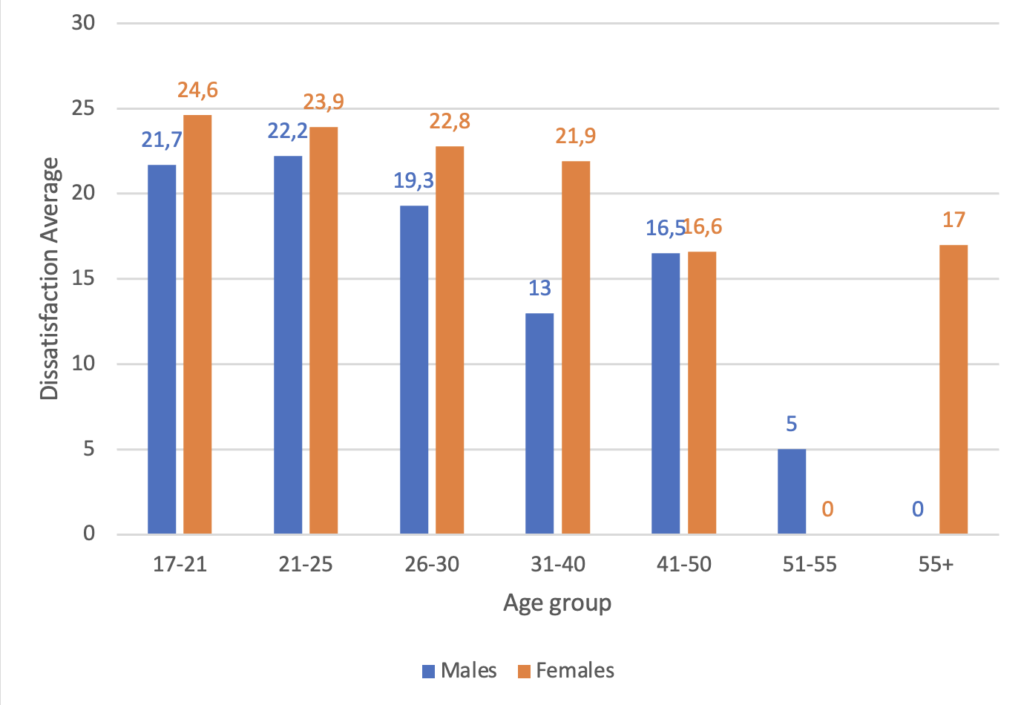Approximately 60% of the world’s population uses social media with many having multiple forms of social media; Instagram, TikTok, Snapchat, Facebook, YouTube, etc. Over the years, many researchers have studied the relationship between social media use and body dissatisfaction and whether social media can cause feelings of self-consciousness, low confidence or body dysmorphia.
On the other hand, it is important to note that in recent times social media has become more accepting and often promotes body positivity and inclusivity, challenging traditional beauty standards. Social media allows individuals from all around the globe to come together, share and interact with each other, creating a sense of community and support.
As a frequent user of social media, I set out to study the relationship between social media and body dissatisfaction and, in this article, I will present the findings from a research I conducted, discuss other advantages and disadvantages and offer possible solutions.
I explored 4 questions:
- Does age affect the level of body dissatisfaction felt?
- Males vs females; does a certain gender feel higher body dissatisfaction?
- Does using social media less = lower body dissatisfaction?
- Is the level of body dissatisfaction for those who believe social media doesn’t promote unrealistic standards lower than those who believe social media does promote unrealistic standards?
Note:
Body dissatisfaction may not directly arise from social media use and external or previous sociocultural factors may have played a role.
This study gives a general overview of the relationship and individual differences may occur.
All data collected from the study is reported in aggregate form ensuring the confidentiality of each participant.
Out of 80 participants (59 female and 21 male), 88.8% believed that social media promotes unrealistic beauty standards. The mean body dissatisfaction for those who voted that they don’t believe social media promotes unrealistic standards was significantly lower.
90% of the participants see images of people with “ideal” bodies on social media. Instagram, with its carefully curated feeds and emphasis on aesthetics, encourages self-comparison not only by exposing users to edited images regularly but also by providing a platform for showcasing exaggerated lifestyles and placing pressure on users to only post flawless photos through the concept of liking and followers.
82.5% of participants use social media daily and this constant exposure to a flawless and perfect life on social media can lead to feelings of insecurity and a decrease in self-esteem. Because 78.7% of participants often compare themselves to others, feeling a failure to match society’s high standards damages self-esteem and leads to an internalisation of ideals and can lead to unhealthy practices to achieve a certain ideal or standard.
Does age affect the level of body dissatisfaction felt?

^The overall average fell as we progressed into older age groups. It’s worth noting that both age groups, 51-55 and 55+, had two participants each. The 51-55 age group had two male participants, whereas the 55+ age group had two female individuals, and despite the small age difference, the 55+ age group had a higher dissatisfaction average.
Does this imply that women, in particular, have a higher level of body dissatisfaction? There was an 11.77% increase in the dissatisfaction felt by females compared to males.
68.7% reported feeling negatively after using social media. According to the comparison theory, an inclination for upward social comparison (comparing oneself to peers viewed as more attractive or superior) is a precursor to body dissatisfaction. So, exposure to social media can be the mechanism through which their negative behaviour develops[1].
Snapchat has several augmented reality effects and filters that can be used to improve appearance, but overusing these tools can distort one’s perception of beauty and worsen one’s self-image.
Now arises the question: does using social media less = lower body dissatisfaction?
| Time spent on social media | Average (mean) dissatisfaction felt |
| Less than 30 minutes | 20.000 |
| 30 mins – 1 hr | 18.727 |
| 1-2 hrs | 19.385 |
| 2-4 hrs | 22.680 |
| 4-6 hrs | 20.067 |
| 6+ hrs | 22.500 |
^These results show that time spent on social media doesn’t majorly affect the level of dissatisfaction felt.
Celebrities have forever portrayed idealised bodies and lifestyles however the rise of influencers – “your day-to-day average person who happens to have everything in order” can contribute to body dissatisfaction.
Influencers and celebrities have the power to shape societal beauty norms, and an increasing number of social media influencers offer solutions on what followers can do to improve their appearance, body, and life. 85% of the participants have felt the need to engage in some form of dieting or exercise to achieve a certain body shape or size.
While influences or celebrities may not have malicious intentions, people with low media literacy may fail to recognize that opinions on ‘healthy lifestyles’ may bear no resemblance to evidence-based health advice.
There is an increased risk of developing anorexia, bulimia, or other eating disorders as well as wanting to undergo cosmetic procedures. Body dysmorphic disorder (BDD) is a mental health illness characterized by intense obsession with perceived flaws in one’s appearance.
When feelings of dissatisfaction arose, participants reported coping by; crying, discussing feelings with others, taking a social media break, trying to eat healthy, and exercising whereas others reported not coping with it and feeling depressed or they simply just ignored the feeling.
Ignoring the feelings of dissatisfaction may only prolong the negative impact, so try to address and process them in healthy ways.
When feelings of dissatisfaction arise, remember that it’s okay to cry and let out your emotions. Remember to nourish your body with healthy foods, but also allow yourself to indulge in treats without guilt. Remember, it’s important to prioritize your mental and emotional well-being alongside your physical health.
While certain body and beauty features/attributes have been standardised, it’s important to remember that there is no norm for beauty. In today’s fast-paced world, trends come and go in a flash.
Social media is only a fragment of the vast spectrum of beauty that exists in the world.
Reference:
- Squire, S. (2022). What role does social media play in the development of negative body image and eating disorders? [online] Butterfly Foundation. Available at: https://butterfly.org.au/what-role-does-social-media-play-in-the-development-of-negative-body-image-and-eating-disorders/.



I was so interesting
it was so interesting *